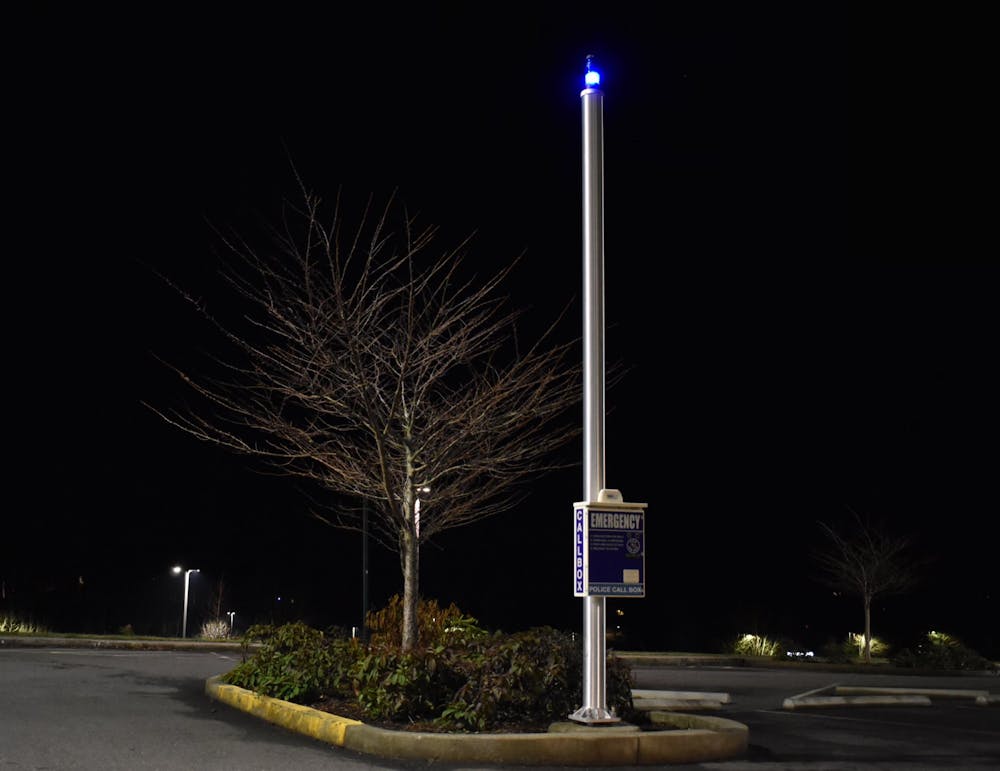Emergency call boxes have served students on Western Washington University’s campus for decades. But in the age of technology and cell phones, have these call boxes finally run their course?
According to the University Police Department website, there are 23 call boxes on campus, with another four located at the Lincoln Creek Transportation Center and the Birnam Wood community. Each residence hall is also equipped with an emergency phone at the front of the building.
The boxes are simple to use, with one push of the button connecting the caller to Western’s Public Safety Dispatch office. Every call receives a response from University Police with an officer sent to the location of the call box, even if no verbal communication between the caller and dispatch officer is made.
The call boxes were used 44 times in 2022, according to University Chief of Police Katy Potts, and most of those calls were not triggered by an actual emergency.
“A lot of times it’s accidental, or someone’s like, ‘Oh, what’s this?’ and they push it,” Potts said. “The ones on our campus are antiquated and getting old.”
Although Potts said the lights are still checked quarterly to maintain function, the age of these call boxes does evoke some uneasy feelings from some students.
“They do look a bit run down, and that makes me a bit nervous about whether or not those systems are updated,” said Charlotte King, a first-year Western student who lives on campus.
For Potts, the boxes still play an important role in the safety of students on campus despite their age. She believes that the presence of the boxes deters crime and provides students an accessible resource when in need.
Potts is not alone in this assessment of the call boxes.
“It's just nice to know that they’re there, even if I’ve never had to use them,” said Megan Ward, a first-year Western student.
In September 2021, Western added another branch to its student safety measures with the launch of the LiveSafe app. This app acts in the same way the call boxes do – one tap of a button on the screen alerts emergency personnel – along with the addition of a few extra features to improve its effectiveness.
LiveSafe gives students instant access to the University Police Department while also allowing users to connect with other members of the app, with features such as “SafeWalk.” This feature shares the location of the phone with a second user, giving students the ability to ensure their friends are traveling safely to their destinations.
“It has a GPS mechanism, so we can track where you hit your emergency button on your phone … Let’s say you’re trying to get away from somebody, we’ll be able to continually find you,” Potts said. “You’re the blue light.”
Usage of the app has still been sparse since its launch. Only 89 reports were made using the app in 2022, Potts said.
When the application was launched for Western students in 2021, the Office of University Communications released a Western Today article covering the options the app provided for students.
Both King and Ward were unaware of the app. Potts said a relaunch of the app may be necessary in order to increase knowledge of the app on campus.
“We do an article to promote LiveSafe about the beginning of every school year and re-run quarterly,” said Director of University Communications Jonathan Higgins. “We plan to further promote and inform campus about LiveSafe on other channels, like social, and physically around campus.”
Miles Tennant (he/him) is a campus news reporter for The Front this quarter. He is a second-year planning to major in the news/editorial path of the journalism department. When not reporting, he enjoys playing soccer and spending time in the gym.
You can contact him @milestennant.thefront@gmail.com






